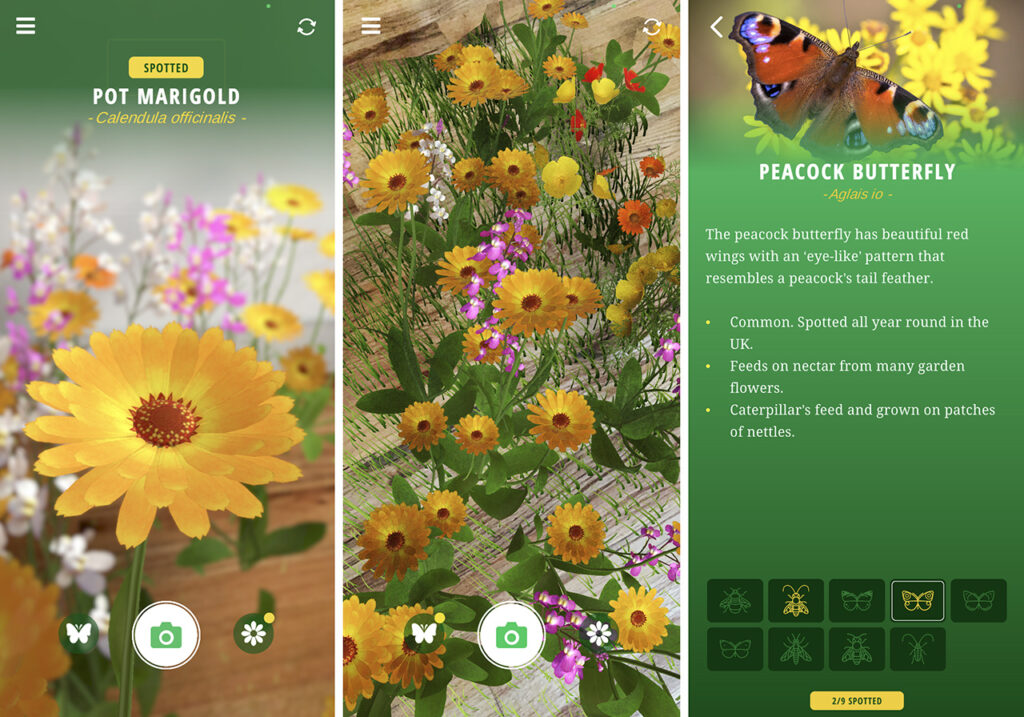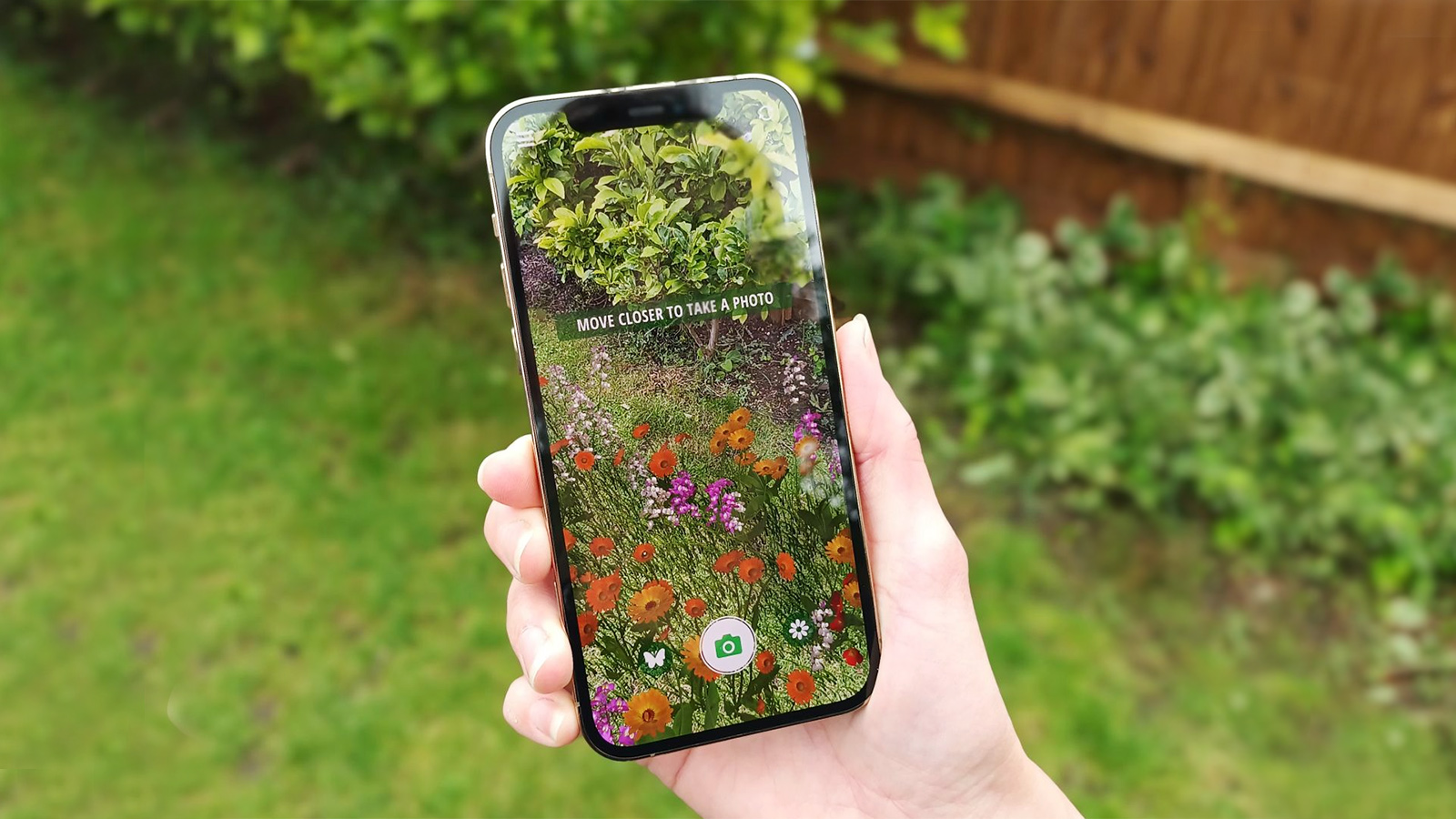Since last week, England has been awash with celebrations — parades, street parties, buntings! — to mark the Queen’s Platinum Jubilee. It’s royalist fervor that has touched not a few of the country’s cultural institutions, not least the Historic Royal Palaces, of course, which oversees the UK’s unoccupied royal properties. On June 1, the organization opened Superbloom at the Tower of London, unveiling what’s to be a vibrant new floral landscape in the historic moat, planted with more than 20 million seeds and designed to attract pollinators.
Except not really. Current reports have it that the display has yet to be super since it has yet to bloom, the recent run of dry weather in London not being much assistance. But no matter: for a better view of what Superbloom should and would look like, there’s always AR.
What happened

Tower Superbloom AR invites users to “seed” their own gardens in AR and learn more about the specimens populating their floral landscape. Images: Tower Superbloom AR
In partnership with game studio PRELOADED, the Historic Royal Palaces has dropped Tower Superbloom AR, a mobile app that invites viewers to enjoy the Tower of London’s new floral landscape remotely — and in full bloom. Using AR built on Niantic’s Lightship platform, audiences can “seed” their own personal garden, then watch as flowers blossom and pollinators gather.
Drawing the phone’s camera closer to their AR garden will allow users to “spot” various species (the long-horned bee, the peacock butterfly, the pot marigold), and call up further information about their biology and behaviors. As the season shifts, the AR garden will presumably be populated with more and different flowers and pollinators that are active during the later summer months.
Why it matters

Image: Tower Superbloom AR
As evident, any project partnering with nature is at the mercy of, well, nature. In lieu of a physical Superbloom, the Tower Superbloom AR enables the Historic Royal Palaces to nonetheless showcase its floral exhibition — and on an accessible platform that might well reach more viewers. In PRELOADED’s words, the AR experience “could democratize access to this major public spectacle and engage audiences beyond the Tower walls.”
The outing also has in its quiver tools by Niantic, the AR pioneer and maker of Pokémon Go. Since late 2021, the company has invited creators to access its technology via its Lightship developer platform, on which they can tap into Niantic’s latest developments such as the Visual Positioning System. The move has already birthed JR Reality, a site-specific AR exhibition. And Niantic, in the meantime, is gaming out other projects from a metaverse-based social network to a 3D map of the world (which has also sparked privacy concerns).
In this, the AR house is setting itself for a match-up with the likes of Meta and Snap. And for creators and developers, Niantic’s offer presents accessible and innovative ways into building in AR, in turn boding well for the technology’s growth and use cases within and without the cultural sector.



